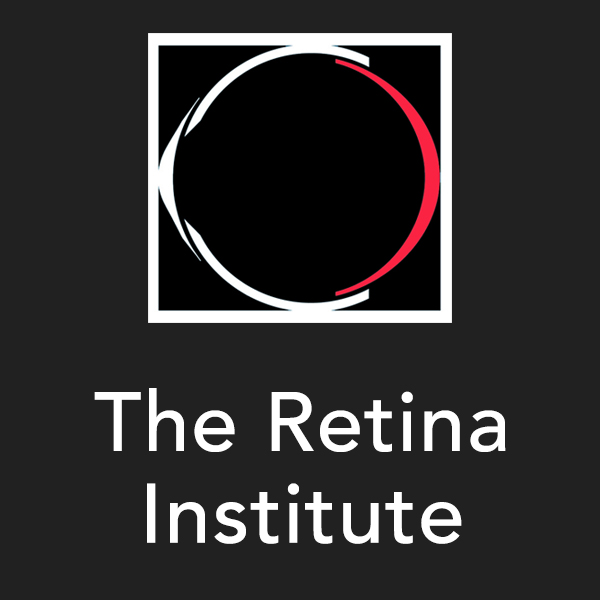Special Testing
Your physician may request special testing if he/she believes that they will be beneficial in the diagnosis and treatment plan for your condition. Each patient is evaluated on a case-by-case basis; therefore, testing will vary depending on factors such as the pathology and severity of the disease.
Example of fundus photograph (top) and OCT (below).
Fundus Photography
Fundus (color) photography is used to document various diseases of the retina such as diabetes, macular degeneration, and tumors. It is a non-invasive test; images are obtained by a camera that is specifically designed for this use. Photographs can be compared to detect the progression of disease, and/or to see how the eye responding to treatment.
Ocular coherence tomography (OCT)
Optical Coherence Tomography, abbreviated OCT, is an extremely sensitive, non-invasive scan of the retina. Cross-sectional images of the retina are generated by a small infrared light. OCT can be used to determine the amount of fluid in and beneath the retina in a variety of diseases such as diabetes, age-related macular degeneration and vein occlusions. Macular holes and epiretinal membranes, too are often imaged with OCT. This procedure allows the physician to monitor the thickness and shape of the retina, which is beneficial to overall eye care.
fluorescein angiography (FA)
Fluorescein angiography (FA) is obtained by injecting a small amount of a non-iodine based dye into a vein in the arm or hand. As the dye travels through the retinal vessels, photographs are taken. Areas where the dye is leaking becomes more visible than it should be. Sometimes the dye is less visible when blood vessels are blocked. This information assists in diagnosis of various diseases and guides treatment options. The fluorescein dye naturally leaves the body. Occasionally, patients will notice a temporary color change in their urine and/or skin; however, this reverts back to normal within a day.
Indocyanine green angiography (icg)
ICG (Indocyanine Green) Angiography is a diagnostic procedure often used in conjunction with Fundus Photography. A small dose (2cc) of iodine-based contrast dye is injected into a vein in the arm or hand. Photographs are then obtained by using a low-level infrared light, which is not harmful to the patient. This procedure highlights the vascular layer underneath the retina, called the choroid. This test differs from a Fluorescein Angiography by allowing the physician to see leaks under a layer of blood. It can be used for evaluating the blood vessels in the choroid, retina, and iris.
Frames from a FA (top) and ICG (below). Each document the flow of the injected dye as it travels through the blood vessels.
Example of an ultrasound (top) and the results of an ERG (bottom).
Ultrasonography
Ultrasonography is used when the physician cannot sufficiently see the retina. This may occur because of a severe amount of blood in the eye (vitreous hemorrhage) or other opacity such as a cataract (clouding of the lens). It is also used to aid in diagnosis and treatment planning for various tumors that will rarely develop in the eye. A probe is used to transmit and receive sound waves (sonar) that are reflected from the various tissues within the eye. The reflected sound waves generate a two-dimensional picture of the area of the eye behind the lens to help determine the condition of the retina, measure tumors, and evaluate other conditions.
electroretinography (ERG)
An ERG (electroretinography) is a test that measures how cells in the retina respond to light signals. This exam helps to identify irregular function. During an ERG, a patient's eyes are dilated and numbing drops are administered. A sensor is placed on the cornea (the clear covering over the eye), and one is positioned on the skin. A series of flashes and/or patterns occur and the results are electronically recorded. Ophthalmologists may use ERG testing to assist in the diagnosis of ocular diseases, including both acquired and hereditary conditions. The outcome of the testing may also help determine the course of treatment.



